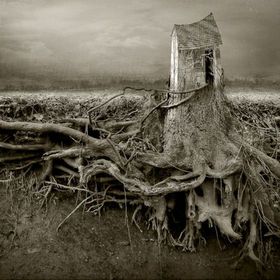Kai Fagerström: Once Upon a Home
Kai Fagerström is a Finish photographer that primarily photographs wildlife. The photographer is a contributor to National Geographic. He won the BBC Wildlife Photographer of the year for both 2010 and 2012. In 2011 he won the Finnish Wildlife Photographer and Winner 2012 IFWPY contest.
The series that caught my attention was Once Upon a Home.Winner. Fagerström lived near a cottage that became abandoned after the owner died in a fire. The cottage became a home to woodland animals. For fifteen years Fagerström documented the lives of the animals in the abandoned buildings near his home. He is all right with long amount of time it takes to accomplish the project.“This is fine with me,” he says. “The journey is more important than the destination.”
The Once Upon a Home is a magical look into the lives of these animals. When the people moved out, the animals moved in. They can be seen peering out of cracks in dilapidated sheds, like the wolf in the above image. An owl is backlit through a window in one shot giving a erie look to the image. His photographs are dark because he does not use a flash, which would scare the animals. The series looks like it is telling the story of a family of animals. One can almost see this as a storybook or fairytale.
The series also shows the patience, determination, and vision of the artist. The top photograph took several nights of Fagerström waiting to get the perfect image of the dog staring at the bank vole. I am not sure if the dog is just curious about what the bank vole is doing or if he is trying to figure out a way in there to get it. I like the stare down, though. The most dramatic example of his determination is when he waited four years to get a picture of a family of badgers. He set his camera on the window sill, stood on a ladder outside, while using a camera remote to take the picture. He would stand on his ladder outside for hours. In some circumstances the photographer will lay down food for the animals to draw them out.
When Fagerström starts a project he usually has an idea in mind. For this project it was abandoned buildings. “Deserted buildings are so full of contradictions,” he says. “I am fascinated by the way nature reclaims spaces that were, essentially, only ever on loan to humans.” I did a series of photographs last semester on abandoned buildings that were reclaimed by nature. My focus was on the plant life that took over the buildings. I never thought of the actual creatures that may find the buildings home. His idea is brilliant. It really makes think about how this could be applied to my car series right now.













































